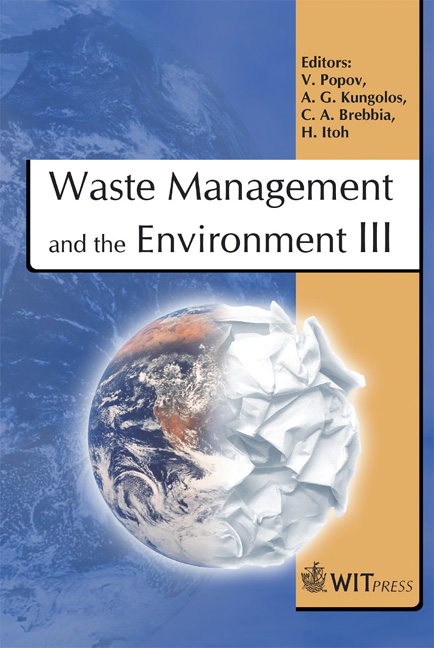Heavy Metal Behaviour During RDF Gasification
Price
Free (open access)
Transaction
Volume
92
Pages
9
Published
2006
Size
452 kb
Paper DOI
10.2495/WM060281
Copyright
WIT Press
Author(s)
G. Compagnone, P. De Filippis, M. Scarsella, N. Verdone & M. Zeppieri
Abstract
Solid wastes, and especially RDF in dealing with the growing presence of organic compounds, mainly plastics, can be considered an important source of energy owing to their inexpensiveness and large availability. However, the presence of heavy metals in the waste can result in a recycling problem when thermal treatment is involved. In fact, small amounts of these metal species can be found in the gaseous stream, and this is particularly true for gasification processes. This work investigates the possibility of using theoretical calculations to evaluate the amount of volatile metal species in the gas stream, obtained by a gasification process, in order to select the adequate gas cleaning facilities. To this aim, the chemistry and volatility of the heavy metals As, Cd, Cr, Cu, Hg, Mn, Ni, Pb, Sb, Sn and Zn, commonly present in RDF, were investigated both theoretically and experimentally at different gasification conditions. A theoretical approach at equilibrium conditions based on thermodynamic data was performed by means of the total Gibbs free energy minimization method. The equilibrium distribution of the trace element species formed under reducing conditions in the 700-1300 K temperature range was calculated. The theoretical results are in substantial accordance with experimental data obtained using a bench scale gasification reactor. This study demonstrates that is possible to predict with reasonable conditions the operating conditions of a RDF gasifyier in order to obtain a syngas with a controlled content of polluting compounds. Keywords: gasification, RDF, trace metals, thermodynamic simulation.
Keywords
gasification, RDF, trace metals, thermodynamic simulation.





